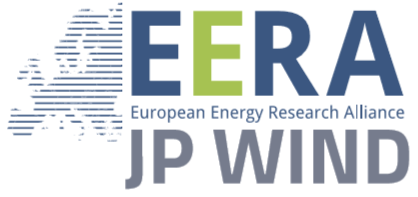Background
Offshore wind is vital for Europe to be CO2-neutral by 2050. The total installed offshore wind capacity will in the most ambitious scenario by the EC, including UK and Norway, reach 450 GW and supply about 1/3 of the electricity demand. For this to happen, the development of a reliable and efficient offshore grid is paramount. In this workshop we will explore the challenges and solutions to make this happen. Three topics are highlighted in this webinar: grid stability, HVDC technology and subsea technology.
Grid stability
Wind turbines in operation today are all grid-following and as a result they depend on an energized and controlled grid for their stable operation. While already contributing to the system stability through provision of ancillary services, moving forward, it is expected that wind turbines will become much more active in supporting the grid, including provision of crucial reliability services such as black-start. This is a necessity in a future with wind energy to be a cornerstone of the electricity supply.
HVDC technology
Larger scale offshore networks can unlock 25% transmission cost savings but to deliver will require high levels of interoperability among the onshore and offshore grid assets and the wind turbines being connected. To deliver these solutions they need to be analysed and tested robustly.
Subsea technology
Floating wind farms are in their infancy but have the potential to deliver up to 150 GW of Europe’s offshore wind capacity by 2050. To achieve this the overall cost of the solution must be reduced and for this, the use of subsea technology for the grid connection of floating wind farms will be important. By placing the substation at the seabed instead of on a floating platform exposed to harsh sea and weather conditions, considerable cost-reductions will be achieved using simplified component designs and tailored specifications for floating wind farms.
This webinar is organized by EERA JP wind, jointly between the subprogramme system integration headed by Nicolaos Cutululis, DTU and the subprogramme on offshore balance of plant headed by John Olav Tande, SINTEF. Attendance is free but requires registration. There will be possibilities to ask questions after each presentation, and the presentations (pdf) will be available on-line for reference after the seminar. Possibly also a summary paper will be published to communicate the main results of the webinar.
_____________________________________________________
EERA JP WIND WEBINAR – PROGRAMME
>> Wednesday 14 April
Session 1: The challenge
This session will through a series of high-level presentations introduce the challenges that must be solved to realize an offshore grid that can accommodate the expected twentyfold expansion of the offshore wind capacity in Europe to reach 450 GW by 2050.
- 12.30: Introduction by the webinar chairs, John Olav Tande, Chief Scientist, SINTEF, and Prof Nicolaos A. Cutululis, DTU
- 12.40: EC research and innovation strategy on offshore wind and grids, Dr. Carlos Eduardo Lima Da Cunha, Policy Officer European Commission
- 13.00: Grid stability in power systems with large amounts of wind energy – results from the Pathfinder project, Ben Marshall, Power System Engineer at The National HVDC Centre, Glasgow, UK
- 13.20: HVDC technology opportunities and challenges, Olivier Despouys, RTE
- 13.40: Subsea technology for connecting floating wind farms, Eirill Mehammer, SINTEF
- 14.00: End of session
Session 2: Grid stability
In this session the issue of grid stability in power systems with large amounts of wind energy will be addressed through three presentations by leading specialists. It will give insight into the challenge of maintaining a stable and reliable power supply in a future system in which offshore wind farms may supply as much as 1/3 of the electric energy in Europe in 2050. This will require the wind farms and other energy sources to actively support the grid stability, offering grid forming capabilities and other ancillary services.
- 14.10: Introduction by the session chair, Prof Nicolaos A. Cutululis, DTU
- 14.15: Grid-forming capabilities of HVDC converters, Jon Are Suul, SINTEF
- 14.35: Grid forming wind turbines, Torsten Lund, Vestas
- 14.55: Weak Grids and Grid-Forming Converters, David Roop, Mitsubishi Electric
- 15.15: End of session
__________________________
> Thursday 15 April
Session 3: HVDC technology
HVDC technology is a key enabler for bulk transmission of electricity over large distances. The technology is already applied for point-to-point connections in GW scale, but must in the future develop into multiterminal, and multi-vendor systems, being part of a hybrid AC-DC network with enhanced control functions. In this session the current experience and research front is presented by leading experts from industry and academia.
- 12.30: Introduction by the session chair, Salvatore D’Arco, SINTEF
- 12.40: A cost efficient system to ensuring HVDC interoperability, Dirk Van Hertem, Associate Professor, KU Leuven
- 13.00: Energy islands to boost offshore wind development, Nicolaos A. Cutululis, DTU
- 13.20: Experience with multi-vendor HVDC systems, Dr Kamran Sharifabadi, Chief Engineer Electrical Power Systems & Renewables, Equinor ASA
- 13.40: End of session
Session 4: Subsea technology
Floating wind offers the opportunity to exploit the rich wind resources over deep water but is still at an early stage of development with only a few demonstration plants in operation. At deep water a conventional substation on a bottom-fixed structure is impractical. The alternative is to have a floating substation, or to utilize subsea technology. This subsea alternative is further presented in this session, in which industry and academia outlines how technology from the offshore oil and gas sector can be adapted to fit for floating wind.
- 14.10: Introduction by the session chair, Eirill Mehammer, SINTEF
- 14.15: Subsea power grid solutions for offshore wind applications, Helyson Parente, Siemens Energy Subsea
- 14.35: Subsea high voltage cables, Erik Eriksson, NKT
- 14.55: Subsea connectors, Marius Asak, Baker Hughes
- 15.15: End of session
Session 5: Summing up
- 15.15: Summing up by webinar chairs, John Olav Tande, Chief Scientist, SINTEF, and Prof Nicolaos A. Cutululis, DTU
- 15.30: End of webinar


